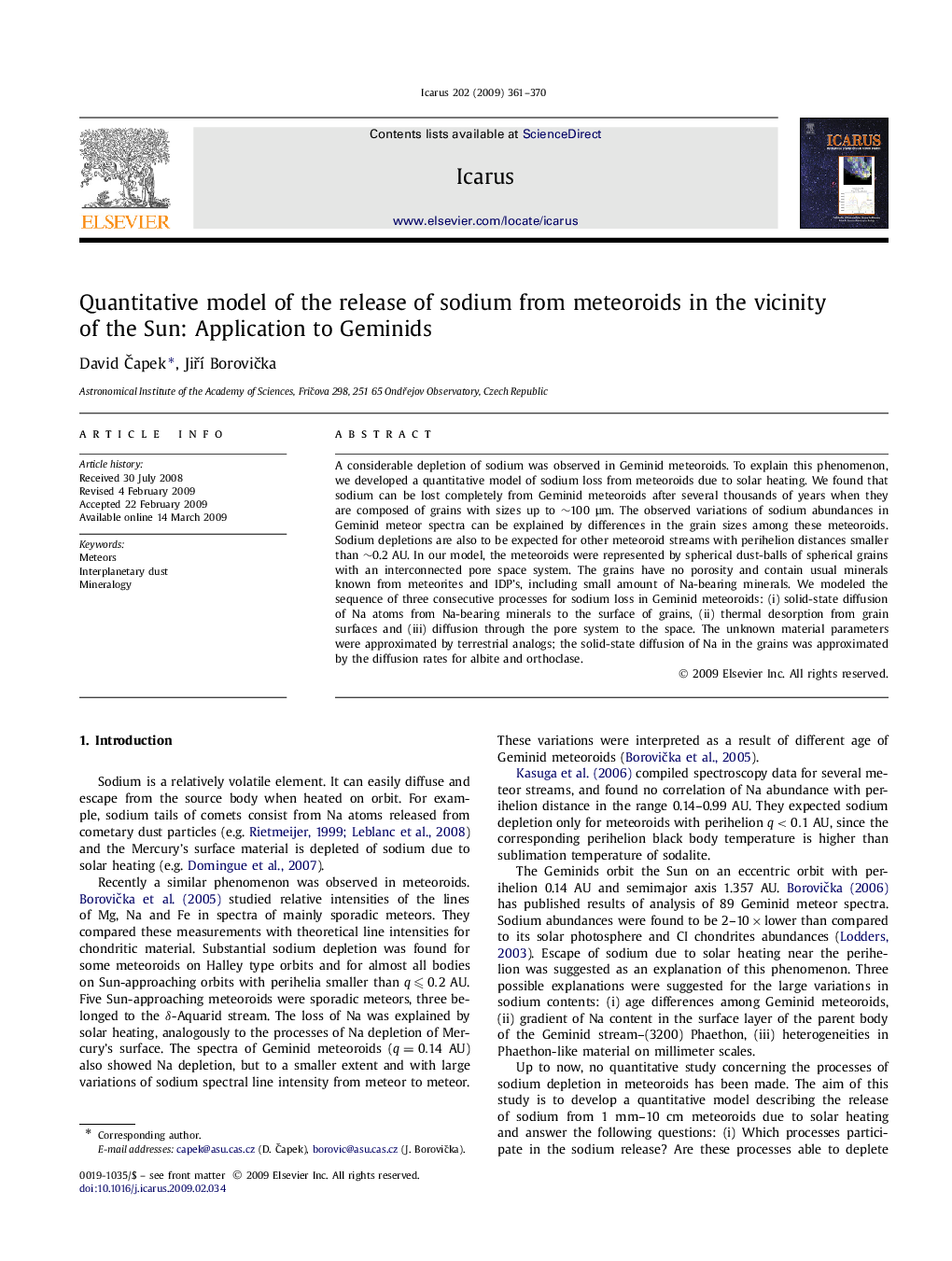| Article ID | Journal | Published Year | Pages | File Type |
|---|---|---|---|---|
| 1775027 | Icarus | 2009 | 10 Pages |
Abstract
A considerable depletion of sodium was observed in Geminid meteoroids. To explain this phenomenon, we developed a quantitative model of sodium loss from meteoroids due to solar heating. We found that sodium can be lost completely from Geminid meteoroids after several thousands of years when they are composed of grains with sizes up to â¼100 μm. The observed variations of sodium abundances in Geminid meteor spectra can be explained by differences in the grain sizes among these meteoroids. Sodium depletions are also to be expected for other meteoroid streams with perihelion distances smaller than â¼0.2 AU. In our model, the meteoroids were represented by spherical dust-balls of spherical grains with an interconnected pore space system. The grains have no porosity and contain usual minerals known from meteorites and IDP's, including small amount of Na-bearing minerals. We modeled the sequence of three consecutive processes for sodium loss in Geminid meteoroids: (i) solid-state diffusion of Na atoms from Na-bearing minerals to the surface of grains, (ii) thermal desorption from grain surfaces and (iii) diffusion through the pore system to the space. The unknown material parameters were approximated by terrestrial analogs; the solid-state diffusion of Na in the grains was approximated by the diffusion rates for albite and orthoclase.
Keywords
Related Topics
Physical Sciences and Engineering
Earth and Planetary Sciences
Space and Planetary Science
Authors
David Äapek, JiÅÃ BoroviÄka,
